Ever wondered to own a House featuring a personal pool, feels relaxing? It is truly a sense of freedom to access your personalized luxury. With all current conditions in the world scenario, an individual would not prefer to choose a public pool. However, owning such a personalized Swimming pool has been amongst popular trends.
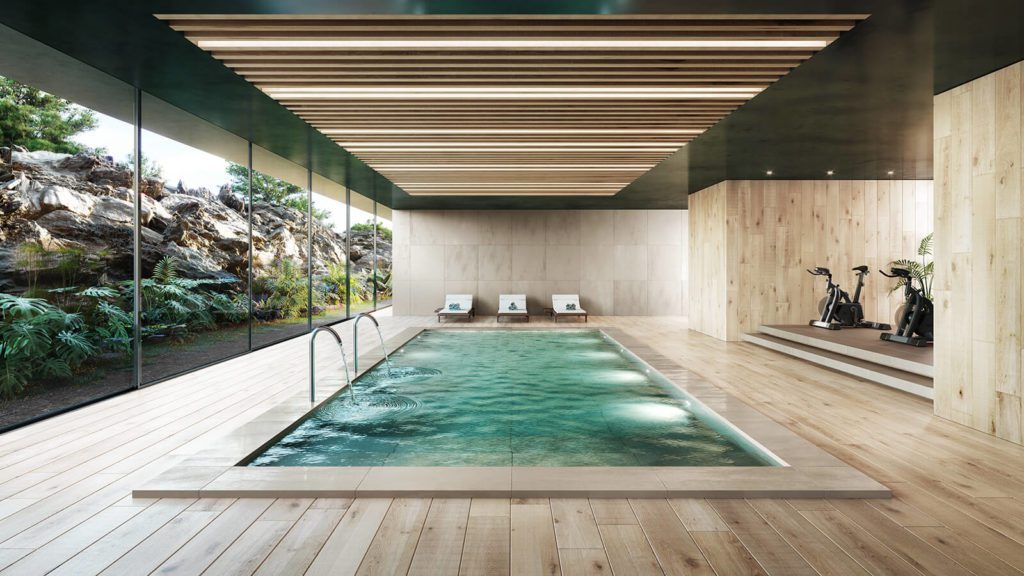
Interpreting an Indoor Swimming pool in Houses
A general conception of having an indoor swimming pool seems to be out of feasible reach. But surprisingly! Many people have opted to suggest a pool for their house design scheme.
These encapsulated spaces enclose a swimming pool under-regulated controlled environment and conditions. Indoor pools can be used year-round long, despite the weather outside. The main purpose to propose indoor pools is for recreational and therapeutic purposes.
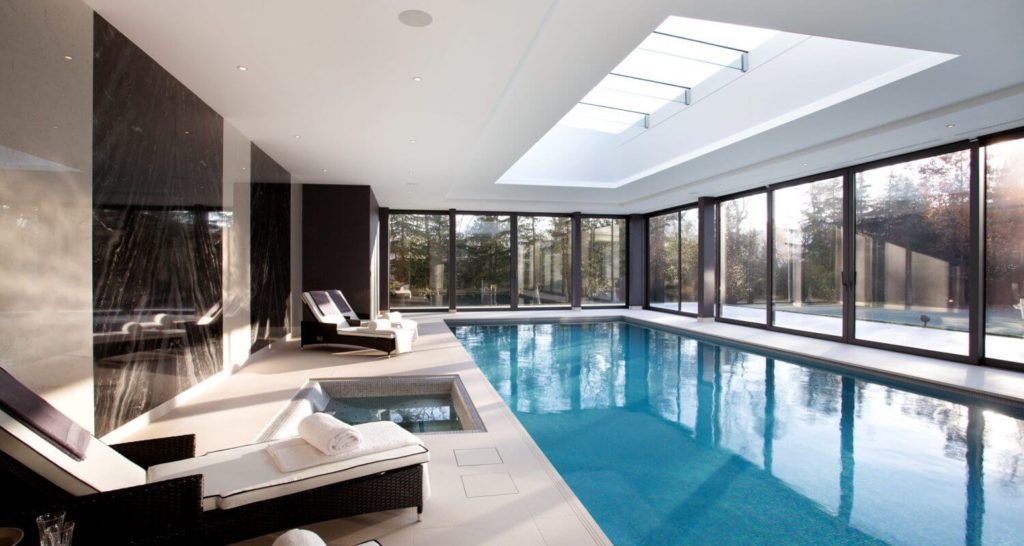
Advantages and disadvantages of Indoor Swimming pools
While considering the design scheme of a swimming pool, both indoor and outdoor pools have their pros and cons. However, brief advantages and disadvantages of Indoor Swimming pool have been listed.
Advantages:
- Accessibility throughout the year
- Low Maintenance of pool compared to outdoor pools
- Restricted exposure to sun damages
- Maintained Privacy and Safety Levels
- Low usage of chemicals in pool water
Disadvantages:
- Construction cost is considerably higher
- Regulated conditions will increase energy costing and decrease energy efficiency
- Usual enclosures are Humid
Accessories and Upgrades for swimming pools
- Water Shockers: This refers to oxidizers, powdered chlorine used for pool water treatment.
- Dehumidifiers: Used to stabilize room environment by maintaining humidity levels.
- Underwater Lights
- Radiant Floor Heating System: Used to dry water or moisture puddles off the pool deck.
- Deck Drainages
- Automatic Pool Cover: Automated system to cover the pool for lowering evaporation losses.
- Temperature Regulators (HVAC): Essential for Ventilation, Temperature control
- Mineral Purifiers or Ozonators: It is used for disinfection of the pool water. Safe, hygienic, and eco-friendly option than chlorine.
- Bubblers or Gushers
- Deck Jets
- Spillovers
- Scupper
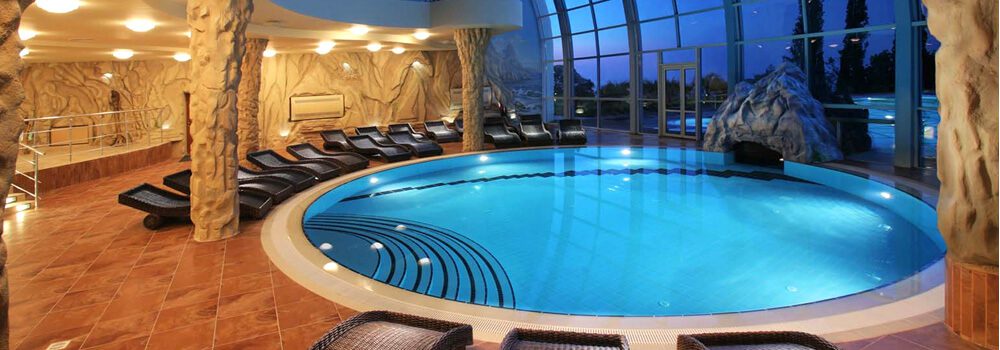
Under water lighting in Indoor Swimming Pool
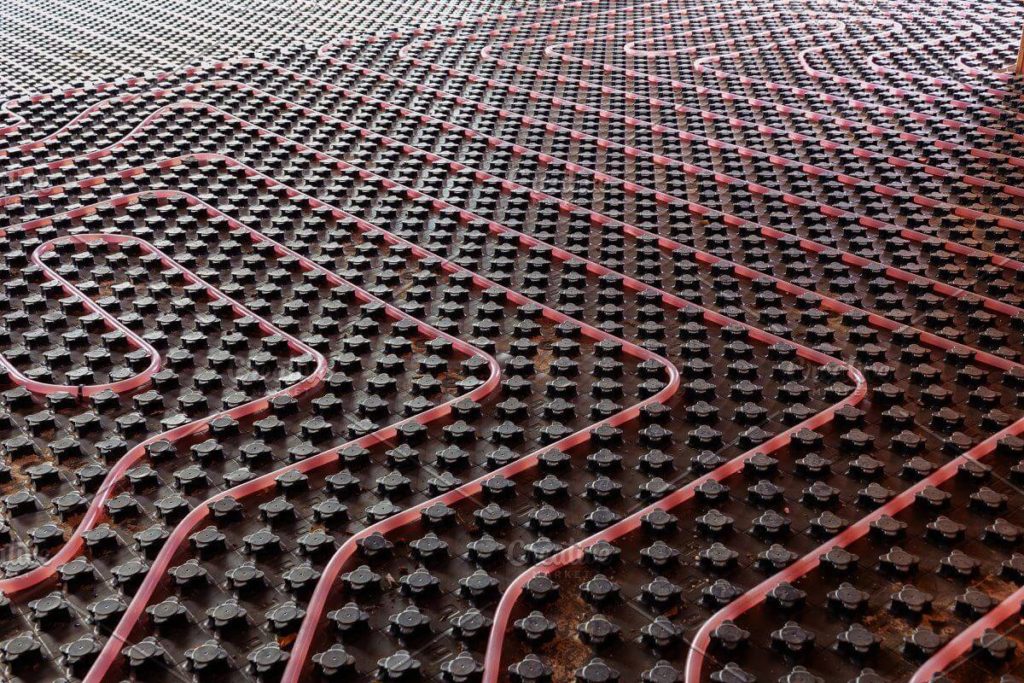
Radiant Floor Heating Tubes Laying
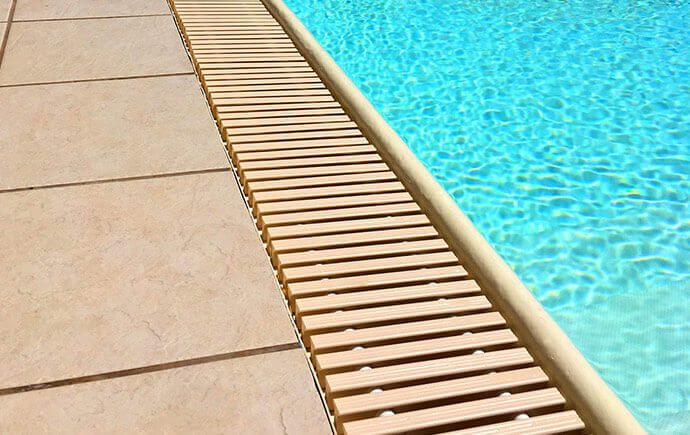
Drainage caging design by the side of the pool
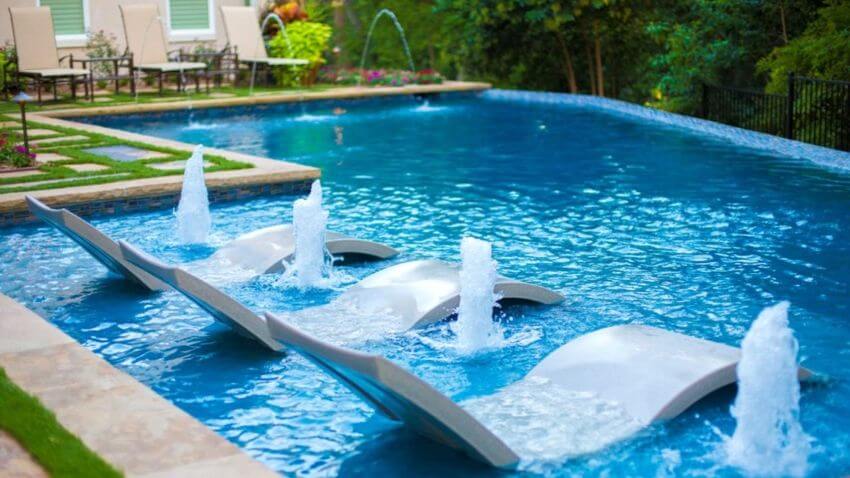
Gushers or bubblers in operation
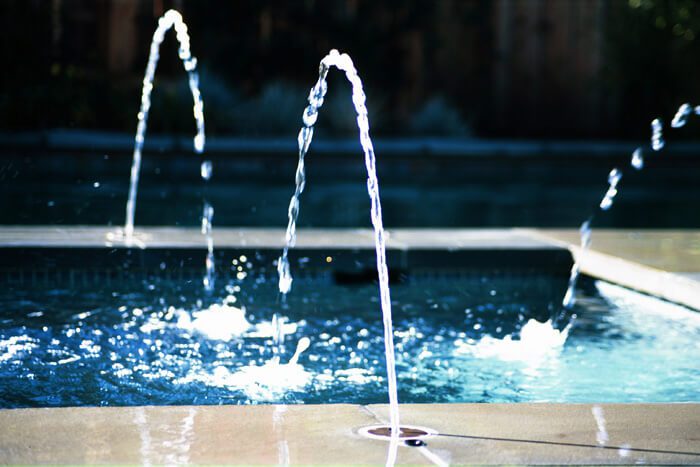
Pool Deck in Operation
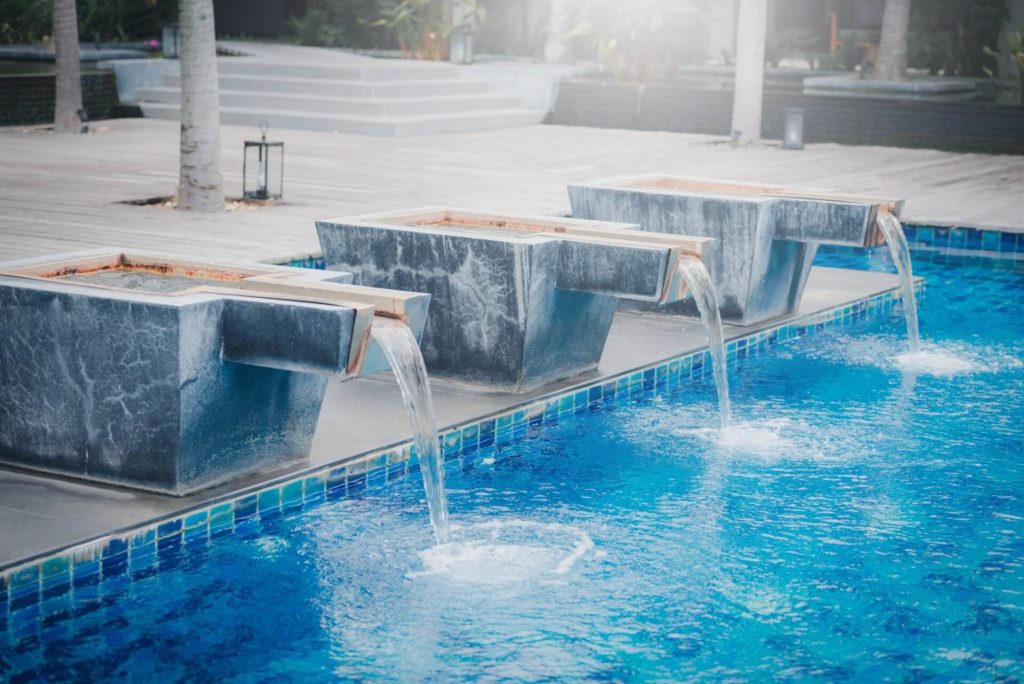
Spillovers for a therapeutic Vibe

Scuppers used as an aesthetic element
What are the sizes and considerations for Indoor swimming pools
Dive deeper into the considerations list to decide the right size of an Indoor Swimming Pool.
1. dEFINE A PURPOSE
The purpose of your swimming pool requirement gives a rough idea of the scale and size of the pool. Is it a personal pool? Is it a recreational party pool? Or do you want a pool for aesthetical flex only? Maybe it is a personal therapeutic den?
2. Describe the user age group
Pools for children and the elderly group must have a shallow end for safety reasons. Whereas, pools used for recreational user groups can have both shallow and deeper sections of depth. Also, the depth of the pool is dependent on the swimming experience of the user.
3. Access the footfall
A personal pool should be sufficient to accommodate a nuclear family. Preferably, a family of six or fewer members requires a pool for casual relaxing and gentle swims. However, to avoid crowding in recreational pools the footprint of the pool can be expanded. Thus the size can be ranging from 14’x25’ to 18’x36’ and much more.
4. Decide the budget
Proposing a pool is a long-term investment. Finances are to be managed according to the size of the proposal to install, operate and maintain further. Your expenses will also include covers, fencing, chemicals, cleaning, and accessories.
Design Tips for Indoor Swimming pools
- The major difference between an indoor and outdoor pool is that an indoor pool requires a complete HVAC provision to counter humidity. Indoor pools should be designed with well-ventilated and controlled heating regulations.
- The slope of the deck in an indoor pool is towards the pool to keep the water away from the surfaces. However, Outdoor pools need to have the slope of the deck away from the pool to avoid debris and runoff water.
- Create insulation gaps for encapsulating walls; this will avoid the moisture to seep through. Another option is to use the water-resistant drywall method.
- Consider allocating ample space for the machine and equipment. Also the access to the equipment room should be from outside.
- Maintain proper ventilation scheme to control humidity. Recommended Humidity level is 50-60%.
- Do not Aim the airflow of the dehumidifier over the pool instead towards the outside wall. This will maintain the level of evaporation.
- Install a pool cover over the water, this helps in reducing the rate of evaporation.
- Try to incorporate natural lighting through windows and skylights (‘Glass ceiling Windows’ can be used), avoid overhead lighting (Difficult to maintain and repair).
Mistakes to Avoid
- “It is a mere enclosure”: After noticing all the accessories and Design Tips, It might be clear that Indoor Swimming Pool is not just a mere enclosure with a pool inside it.
- “The Exhaust Fans will be more than sufficient”: There is a huge possibility of clients trying to avoid dehumidifiers and other essentials to lower down the cost initially.
- “These are just the Ductwork, planning is not a priority”: Ductworks in your indoor pool area are essential and require an extensively planned layout.
- “We will manage the temperature manually”: There comes the part where the Human does the error! Temperature regulators adjudge the live-environment report and maintain the same.
- “We have ‘water-proof materials in our design scheme”: Proposing a water-proof material palette does not assure longevity. Even water-proof materials are also water-damage prone on prolonged immersion and exposure to water.
– Anshul Kulshrestha
 (+91) 7249196273
(+91) 7249196273
